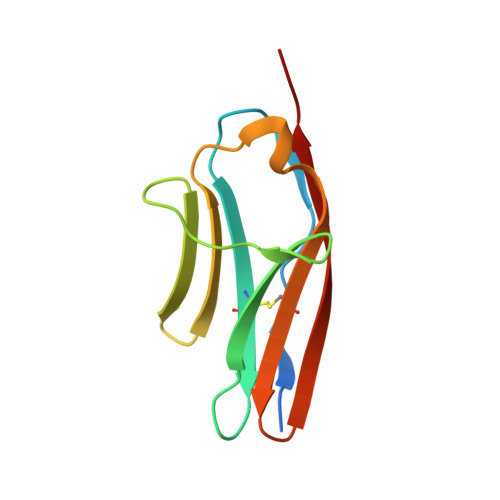Intracellular MLCK1 diversion reverses barrier loss to restore mucosal homeostasis.
Graham, W.V., He, W., Marchiando, A.M., Zha, J., Singh, G., Li, H.S., Biswas, A., Ong, M.L.D.M., Jiang, Z.H., Choi, W., Zuccola, H., Wang, Y., Griffith, J., Wu, J., Rosenberg, H.J., Wang, Y., Snapper, S.B., Ostrov, D., Meredith, S.C., Miller, L.W., Turner, J.R.(2019) Nat Med 25: 690-700
- PubMed: 30936544
- DOI: https://doi.org/10.1038/s41591-019-0393-7
- Primary Citation of Related Structures:
6C6M - PubMed Abstract:
Epithelial barrier loss is a driver of intestinal and systemic diseases. Myosin light chain kinase (MLCK) is a key effector of barrier dysfunction and a potential therapeutic target, but enzymatic inhibition has unacceptable toxicity. Here, we show that a unique domain within the MLCK splice variant MLCK1 directs perijunctional actomyosin ring (PAMR) recruitment. Using the domain structure and multiple screens, we identify a domain-binding small molecule (divertin) that blocks MLCK1 recruitment without inhibiting enzymatic function. Divertin blocks acute, tumor necrosis factor (TNF)-induced MLCK1 recruitment as well as downstream myosin light chain (MLC) phosphorylation, barrier loss, and diarrhea in vitro and in vivo. Divertin corrects barrier dysfunction and prevents disease development and progression in experimental inflammatory bowel disease. Beyond applications of divertin in gastrointestinal disease, this general approach to enzymatic inhibition by preventing access to specific subcellular sites provides a new paradigm for safely and precisely targeting individual properties of enzymes with multiple functions.
- Department of Pathology, University of Chicago, Chicago, IL, USA.
Organizational Affiliation:
















